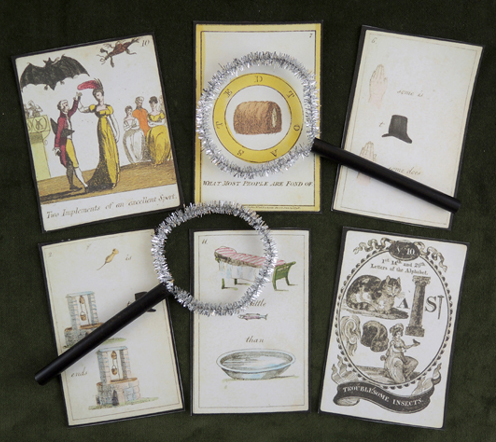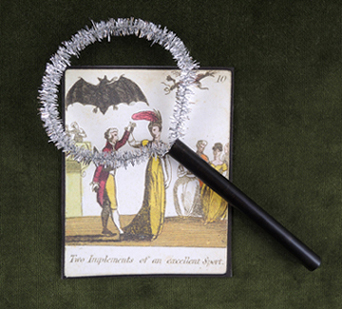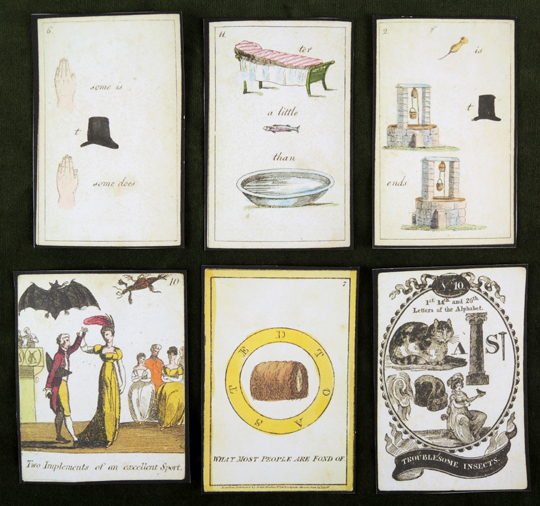 Calling all consulting detectives…grab your sparkle stem magnifying glass and examine this most intriguing collection of 18th and 19th century puzzle cards. And, while the individual man is an insoluble puzzle, the answers to these cards are at the end of the post (and you can print a set of your own)!
Calling all consulting detectives…grab your sparkle stem magnifying glass and examine this most intriguing collection of 18th and 19th century puzzle cards. And, while the individual man is an insoluble puzzle, the answers to these cards are at the end of the post (and you can print a set of your own)!
You’ll need:
- 1 drinking straw
- 1 sparkle stem
- Scissors
Cut a drinking straw down to 3″. Gently fold a sparkle stem in half (soft fold, not hard) and thread the ends into the straw. Round the sparkle stem loop sticking out of the top of the straw. Done!
 And what of those curious cards? They are reproductions of 18th and 19th century rebus puzzle cards in our library’s special collections. A rebus (also called a hieroglyphic) puzzle is created using pictures in place of syllables or entire words. Sometimes, the placement of an object is important to the puzzle as well.
And what of those curious cards? They are reproductions of 18th and 19th century rebus puzzle cards in our library’s special collections. A rebus (also called a hieroglyphic) puzzle is created using pictures in place of syllables or entire words. Sometimes, the placement of an object is important to the puzzle as well.
Here are 6 cards from our vaults, all hailing from England. The top three cards are from Feronica’s Hieroglyphical Riddles (publisher unknown, circa 1840). Across the bottom row, from left to right, are cards from Peter Ponder’s First Pack of Puzzle Cards (J. Aldis, 1808), Wallis’s New Pack of Puzzles for 1798 (John Wallis and Champante & Whitrow, 1798), and An Entire Pack of New Puzzle Cards (W. and T. Darton, circa 1805).
Want to try these puzzle cards on a few young detectives? You’ll find a printable set here!

The solutions, moving top row to bottom row, left to right:
Handsome is that handsome does
Better a little fish than empty dish
Awl is well that ends well
Two implements of an excellent sport: bat and ball (for Cricket, of course!)
What most people are fond of: toasted muffin
Troublesome insects: ant, caterpillar, snail, earwig, and ladybird
